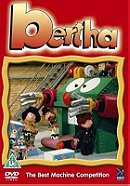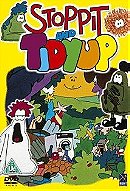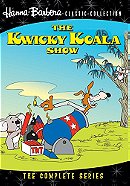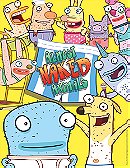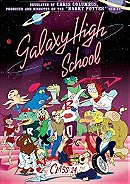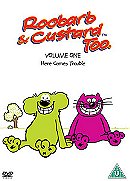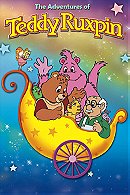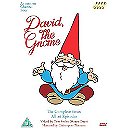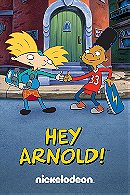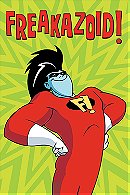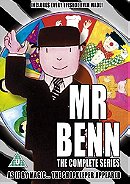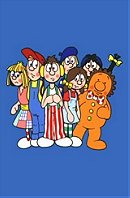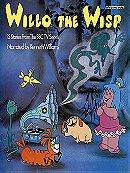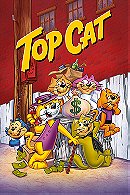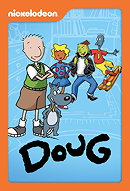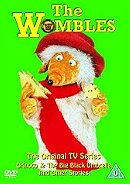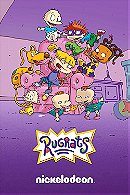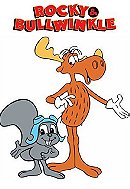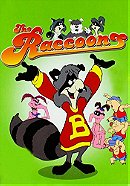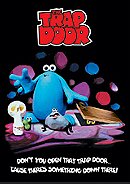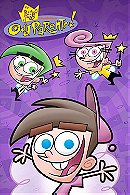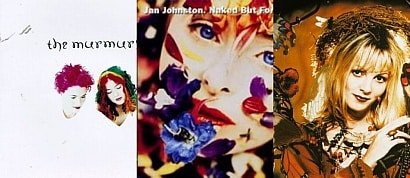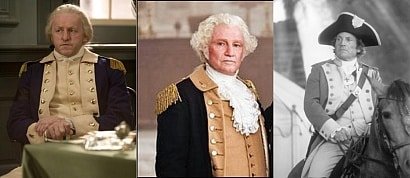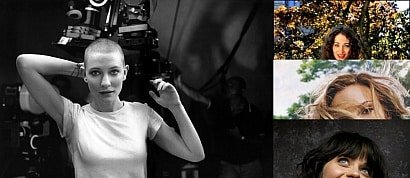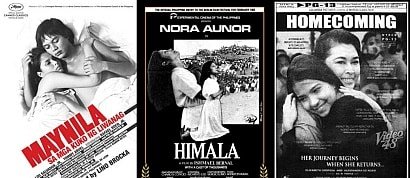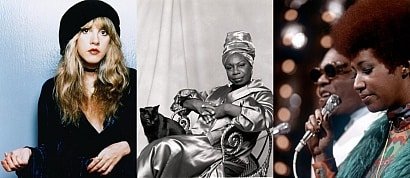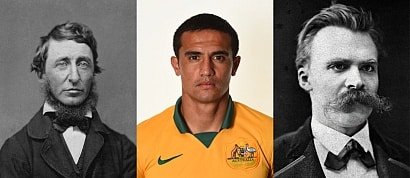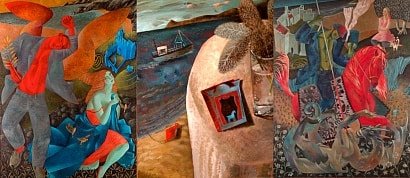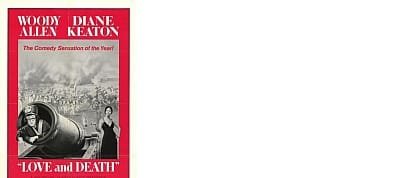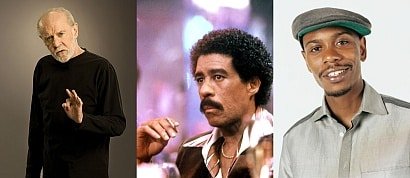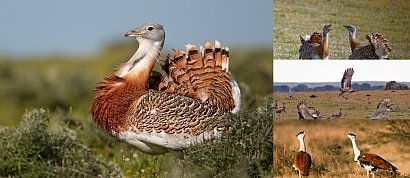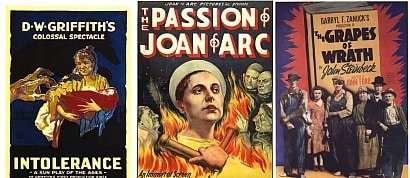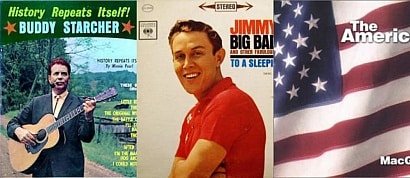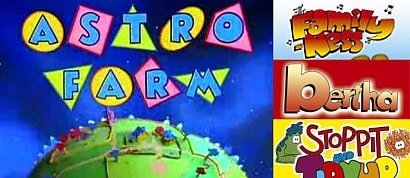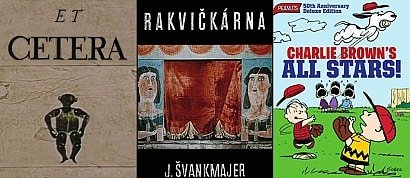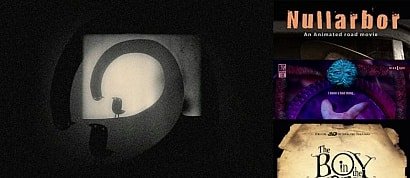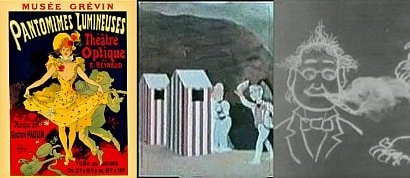100 Greatest Children's TV Shows
Sort by:
Showing 1-50 of 100
Decade:
Rating:
List Type:
Produced by FilmFair, the studio responsible for such fondly remembered shows as 'The Herbs', 'Moschops' and 'The Adventures of Portland Bill', 'Astro Farm' was one of their latter day stop-motion creations along with 'Huxley Pig' and 'The Gingerbread Man'. Short and sweet, 'Astro Farm's simple stories of an asteroid covered in farm land, tended by the Foxwood family and coveted by the Gorps from the nearby, desolate planet of Gorpdale, were enhanced significantly by the wonderfully colourful visuals and great animation. This was a fixture of Friday afternoons in my house, where we'd have beans on toast and watch 'Astro Farm', 'Victor and Hugo' and 'Knightmare', with the weekend stretching out before us. To this day this is one of my most comforting nostalgic memories, which is probably what secured 'Astro Farm' a place on this list above several other worthy FilmFair productions.
Created by Peter Maddocks, who later went on to make 'Jimbo and the Jet-Set' and 'Penny Crayon', 'The Family-Ness' was a fun cartoon about the monsters living in Loch Ness. Befriended by two children, Elspeth and Angus, the monsters could be summoned by a blast on a 'thistle-whistle'. Each of the monsters had a punning name, such as Ferocious-Ness, Lovely-Ness, Clever-Ness or (my favourite) Eyewit-Ness. Fairly standard adventures abounded but 'The Family-Ness' was raised above the average by Maddocks' memorably appealing cartoony style and the superb theme tune 'You'll Never Find a Nessie in the Zoo'.
Created by Woodland Animations, 'Bertha' was one of several attempts to follow up that studio's success with 'Postman Pat'. Other Woodland Animations series with that aim included 'Gran' and 'Charlie Chalk' and though I remember both fondly, 'Bertha' was the best of these short-lived efforts. The titular Bertha was a big machine in a factory which seemed to produce pretty much anything you could imagine. Part of the fun was seeing what Bertha would be churning out each episode and I remember this theme being incorporated into the 'Bertha' board game, which I had as a child. As with all the Woodland Animations series, the stop motion characters were charming and the simple stories were effective but perhaps the trappings of the factory as a setting in contract with 'Postman Pat's airy and attractive Greendale were what prevented 'Bertha' from becoming a recognised classic. It is still fondly remembered by many though, particularly its catchy theme tune by Guy Fletcher.
Lasting just one short series of 13 episodes, 'Stoppit and Tidyup' was a fun little cartoon series by CMTB animation, the studio that created the classic 'Trap Door' and went on to make 'Bump'. While 'Bump' took things in a gentler direction, 'Stoppit and Tidyup' maintained the grotesquery and focus on humour that was evident in 'The Trap Door', often with moral messages forsaken in favour of good gags. Despite this, 'Stoppit and Tidyup' was actually created to support the Keep Britain Tidy campaign. Each episode was dedicated to a different character, all of whom were named after things that adults say to children, such as Clean Your Teeth, Calm Down, Eat Your Greens and the Big, Bad I Said No! Terry Wogan's warm, comforting tones provided great narration, essential, given that the characters all communicated only through indecipherable noises.
One of my favourite TV personalities that everyone else seems to have forgotten is Andrew O'Connor. A comedian, presenter and magician, O'Connor was an enormously appealing, witty talent who popped up on numerous series when I was younger, from Saturday morning children's shows like 'Number 73' and 'On the Waterfront' to underrated game shows like 'Talk About' and 'The Alphabet Game'. O'Connor went on to be much more successful behind the camera, chiefly as the co-creator and producer of sitcom 'Peep Show', but for a brief moment in 1990 he gave what, for me, was his definitive TV performance in the role of a computer that keeps picking up pop culture references that interfere with his normal performance. 'Kappatoo' was the show, a sci-fi comedy-drama about a boy in the 23rd century who switches places with his 20th century 'time-twin'. Future stars Denise Van Outen and Sarah Alexander also appeared in the series or its sequel, inevitably called 'Kappatoo II'. The show lasted for 27 episodes and yet it is largely forgotten, despite the brilliantly entertaining performance by Andrew O'Connor, which was the show's comedy highlight and the main reason the show has stayed in my mind all these years.
Created by Michael Cole, who also created the likes of 'Bod', 'Fingerbobs' and 'Chockablock', 'Pigeon Street' was an animated series with an appealingly rounded, cut-out look to it. Like Gordon Murray's 'Trumptonshire Chronicles' years before, 'Pigeon Street' focused on a whole community of characters, many of whom had their own theme songs. 'Pigeon Street' has been credited with being an early example of a British children's show with a multi-cultural cast of characters and it also showed in progressiveness in its refusal to adhere to other expectations. For instance, one family in the series was composed of Long Distance Clara, a female lorry driver, and her husband Hugo, a cook. Brightly coloured, upbeat and appealing, 'Pigeon Street' made a big impact across its 13 episodes and was repeated for many years after its initial broadcast.
'Puddle Lane' was a delightful pre-school programme that ran for a healthy 102 episodes and spawned a very popular series of 54 Ladybird storybooks. These stories were used as the basis for the animated segments of the show, in which the Wizard (played by Neil Innes of the Bonzo Dog Doo-Dah Band) would tell his puppet sidekick Toby the Spell Dragon a story and conjure up the accompanying pictures by swishing his finger in a puddle. With Innes also contributing music to the series, 'Puddle Lane' was a lively treat with great puppets (the series replaced the hideous 'Mooncat', much to my brother's delight since he was terrified of that strange, green feline puppet), a fantastic host and enjoyable stories at the heart of each show.
Three of the biggest names in cinematic cartoons, Tex Avery, William Hanna and Joseph Barbera, came together to create this great but short-lived cartoon series. Avery had been instrumental in the creation of Bugs Bunny and created some of the finest cinematic cartoons ever at MGM, while Hanna and Barbera were responsible for all of the finest Tom and Jerry shorts. Having made the transition to TV, Hanna-Barbera became the dominant name in American animation for three decades, creating a clutch of household name stars including Yogi Bear, Scooby Doo, Huckleberry Hound and the Flintstones. Although working on a much lower budget than in their early cinematic work, Hanna and Barbera had managed to create a brilliantly familiar formula for budget TV treats. Avery, meanwhile, had struggled since his heyday and become increasingly reserved and depressed.
None of this shows in the lively 'Kwicky Koala Show', a final testament to Avery's talents which sadly he did not live to see aired. Although it never reaches the heights of his best work, 'The Kwicky Koala Show' was an extremely funny and entertaining show which drew on many traditions of the cinematic cartoons, such as characters impersonating famous actors. The titular character shares the speediness of former theatrical stars like the Road Runner and Speedy Gonzales, while his ability to appear anywhere mirrors Avery's own creation Droopy. Kwicky shared the half-hour other characters The Bungle Brothers, Crazy Claws and Dirty Dawg, ensuring none of the shtick got old too quickly. It's a real shame that this lively, colourful creation languishes in obscurity, and surprising given its connection with Tex Avery. For my money, it was much more entertaining that the persistently samey but enduringly popular 'Scooby Doo'.
None of this shows in the lively 'Kwicky Koala Show', a final testament to Avery's talents which sadly he did not live to see aired. Although it never reaches the heights of his best work, 'The Kwicky Koala Show' was an extremely funny and entertaining show which drew on many traditions of the cinematic cartoons, such as characters impersonating famous actors. The titular character shares the speediness of former theatrical stars like the Road Runner and Speedy Gonzales, while his ability to appear anywhere mirrors Avery's own creation Droopy. Kwicky shared the half-hour other characters The Bungle Brothers, Crazy Claws and Dirty Dawg, ensuring none of the shtick got old too quickly. It's a real shame that this lively, colourful creation languishes in obscurity, and surprising given its connection with Tex Avery. For my money, it was much more entertaining that the persistently samey but enduringly popular 'Scooby Doo'.
'Tiny Planets' was an utterly charming computer animated series for pre-school children, featuring the characters Bing and Bong, two aliens who explore their surrounding planets on a fluffy, catapult-powered sofa. Each five minute episode (of which 65 were made) is largely dialogue free and focuses on the determined, wise and good-natured Bing and the inquisitive, hyperactive, child-like Bong as they travel to a different planet and encounter a problem to be solved. The series was designed to encourage children to question and analyse how things work, increasing problem-solving abilities while emphasising the fun side of learning new things, exploring new possibilities and embracing different viewpoints. For these laudable ambitions and their utterly charming execution, 'Tiny Planets' won several awards including three BAFTAs.
'How 2' was a great factual programme which presented short segments that answered interesting questions that all began with the word 'How...?' The show began in 1990 but was actually a revival of the long-running series 'How', which began in 1966 and ended in 1981 and was based on the same concept. Although I never caught the original series, its lifespan and its subsequent revival suggest it was every bit as good. However, the era that I remember most was when the show was presented by Fred Dinenage, Gaz Top and Carol Vorderman. Dinenage had actually presented the 'How' series since its inception and was the only presenter never to quit the show throughout its many incarnations. His lengthy tenure was obvious to viewers from his warm, engaging style and he always felt very much the elder-statesman of the show, in a similar way to which Johnny Ball always felt like the best Science teacher you never had. 'How 2' was a source of numerous great tips, tricks and titbits to pass on in the playground and the success of this revival, which ran a further 16 years, was testament to a good idea, well researched and presented.
'Bump in the Night' is an almost completely forgotten gem from the little-known Danger Productions. Focusing on Mr. Bumpy, a grotesque green monster who lives under a ten year old boy's bed and subsists on dirty socks and dust bunnies, 'Bump in the Night' was bumped off after only one year but for those who caught it, it stuck in the mind. Characterised by a frantic energy that was evident from the opening rock 'n' roll theme tune, 'Bump in the Night' featured superbly squishy stop-motion animation, funny scripts (by creator Ken Pontac, who has worked on such diverse projects as 'Lazytown' and 'Happy Tree Friends') and an exquisite lead voice performance by Jim Cummings, who portrayed Mr. Bumpy as a kind of even-more-ghoulish Screamin' Jay Hawkins. Look under the bed! This is a lost gem worth rooting out.
Back when I was a kid, there was a great deal more TV highlighting environmental concerns, something that seems to have been largely wiped out by a tsunami of apathy and selfish irresponsibility. Consequently, the environmentalism-themed shows of old have become the victims of derision for even attempting to do something positive, dismissed as wishy-washy liberalist nonsense by those who would rather pretend human beings have no responsibility towards their planet and future generations.
One of the most prominent of these environmentalist shows was 'Captain Planet and the Planeteers', an ambitious project that sought not only to highlight environmental problems but also to offer solutions and promote a healthy, level-headed attitude towards other issues such as multiculturalism, drugs and even the AIDs/HIV pandemic. The concept was a strong one and managed to mix its lessons with an exciting action/adventure plot every week. The Planeteers were a group of teenagers each originating from a different part of the world and endowed with a magic ring which gave them the power to command the elements to work in their favour. When they combined these powers, it summoned up Captain Planet, the titular superhero always ready with a quip while he dispatched the bad guys. 'Captain Planet and the Planeteers' was by no means a perfect series but it was elevated above the usual action series like 'He-Man and the Masters of the Universe' in that its sole purpose wasn't to sell action figures (although there was, inevitably, a tie-in range of merchandise). For its good intentions and fine execution, 'Captain Planet and the Planeteers' more than earns its place on this list.
One of the most prominent of these environmentalist shows was 'Captain Planet and the Planeteers', an ambitious project that sought not only to highlight environmental problems but also to offer solutions and promote a healthy, level-headed attitude towards other issues such as multiculturalism, drugs and even the AIDs/HIV pandemic. The concept was a strong one and managed to mix its lessons with an exciting action/adventure plot every week. The Planeteers were a group of teenagers each originating from a different part of the world and endowed with a magic ring which gave them the power to command the elements to work in their favour. When they combined these powers, it summoned up Captain Planet, the titular superhero always ready with a quip while he dispatched the bad guys. 'Captain Planet and the Planeteers' was by no means a perfect series but it was elevated above the usual action series like 'He-Man and the Masters of the Universe' in that its sole purpose wasn't to sell action figures (although there was, inevitably, a tie-in range of merchandise). For its good intentions and fine execution, 'Captain Planet and the Planeteers' more than earns its place on this list.
The French-Canadian 'Sharky and George' is a hidden gem which is actually remembered by a surprising amount of people, perhaps chiefly for its catchy theme tune. Shown very early on Saturday mornings in the UK, 'Sharky and George' was one of those shows that had a slightly odd edge to it, perhaps because it was watched in that strange otherworldly state before the adults got up. Although its tales of two private detective fish were not unusual for children's TV, I do remember the eerie majesty of the opening sequence to each episode in which the camera panned over the city of Seacargo accompanied only by unsettlingly ethereal music. This sequence looks beautiful in retrospect but was so unusual that it immediately set the series apart. Each episode also began with a great old-style newsreel type introduction, which fed into the overall authenticity of the 50s noir spoof. There were other foreign cartoons dubbed into English that were shown in the early hours and shared something of 'Sharky and George's atmosphere, such as 'The Bluffers', but 'Sharky and George' stood out as the best.
Garfield and Friends (1988)
As a kid, 'Garfield' was my favourite comic strip. I used to buy the weekly comic and papered my bedroom wall with the posters from it. There was something about this fat, lazy, cynic in which I saw a lot of myself. Although I've managed to shed a few pounds and dropped the cynicism of my angry youth, Garfield still appeals to me as a character, especially as voiced by the wonderful Lorenzo Music. 'Garfield and Friends' was the follow-up to a series of great TV specials based on the work of Jim Davis. The best of these specials, such as 'Babes and Bullets' or 'Garfield: His 9 Lives', were brilliantly funny and inventive. By comparison, 'Garfield and Friends' didn't quite measure up and instead took an increasingly wacky approach. But if the series wasn't quite as good as the strips or specials, it was consistently entertaining and grew more ambitious in its later episodes, such as the fourth-wall breaking 'Mistakes Will Happen'. It was also good to see Jim Davis's other comic strip 'Orson's Farm' (aka 'US Acres') getting an adaptation with a weekly segment.
Almost Naked Animals (2011)
One of the most recent shows to make an appearance on this list, 'Almost Naked Animals' is a Canadian cartoon created by Noah Z. Jones following the adventures of Howie, a dog who owns the Banana Cabana, a tropical resort staffed by Howie's animal friends including the good-natured but jittery Octo, the sarcastic and irritable Bunny, the narcissistic Narwhal and the completely surreal Duck. The show's title comes from the fact that, given their tropical climate, all the residents of the Banana Cabana have shaved off most of their fur and wear only undergarments. Intentionally ugly and often pretty gross, 'Almost Naked Animals' is also frequently hilarious. Relieved of any morally redeeming value whatsoever, the show is able to focus instead on bonkers plots, over-the-top jokes and baffling non-sequiturs. The jaw-droppingly idiotic but always enthusiastic Howie and his life-endangering antics (brilliantly voiced by Rob Tinkler) are the source of many of the show's biggest laughs but it is the scene-stealing Duck who keeps me coming back for more with his dead-eyed stare, his nuggets of warped wisdom delivered in monotone and his apparent omnipresence when there's a timely non-sequitur to be delivered.
Paddington Bear (1976)
Adapted from Michael Bond's popular series of books about a bear from darkest Peru who comes to London and is adopted by the Brown family, 'Paddington Bear' was a hit for FilmFair. Consisting of short 5 minute stories narrated by Michael Hordern, 'Paddington Bear' was particularly notable for its unusual visual style, in which Paddington himself was a three-dimensional stop motion puppet and everyone and everything else was represented by simple 2D sketches which made not effort to hide their artificiality. This bold artistic decision paid off in spades, making for an extremely memorable style, and the natural charm of the Paddington character coupled with the inventiveness of the aesthetics ensured 'Paddington Bear' a run of 56 episodes and three specials.
One of the earliest creations of the wonderful Cosgrove Hall, 'Jamie and the Magic Torch' was a charmingly psychedelic series that ran for four years and thirty-nine episodes. Written by Cosgrove Hall's regular writer, the fantastically witty Brian Trueman (who wrote later hits 'Danger Mouse' and 'Count Duckula' among other gems), 'Jamie and the Magic Torch' followed young Jamie and he and his dog Wordsworth visited the world of Cuckoo Land through a magic portal created by shining a torch on the floor. Obviously inspired by dreams, every episode began with Jamie being put to bed by his mother, before leaping out to visit Cuckoo Land via a magic helter skelter. There's enough wonderment in a plot synopsis to give a good idea of the feel of 'Jamie and the Magic Torch' and its gentle wit and vivid visuals have helped permanently lodge it in the minds of children of a certain generation.
Created by Prudence Fraser and Robert Sternin, veterans of US sitcoms such as 'Three's Company' and 'Who's The Boss', 'The Charmings' was an attempt to make a sitcom for kids that the whole family could enjoy. The premise, in which the characters from the 'Snow White' story were transported to modern day LA by the wicked witch, was ripe for all sorts of good-natured fish-out-of-water antics, the like of which were the basis for later children's sitcom 'My Parents Are Aliens'. 'The Charmings' was notable for its good cast, particularly Judy Parfitt as the wicked witch and Paul Winfield as the Magic Mirror, and an original concept that audiences perhaps found too strange for its prime-time slot. Maybe 'The Charmings' would have lasted longer had it been placed in a children's timeslot, as it was in the UK. Instead, this original and fun little show was cancelled after 21 episodes.
Created by Chris Columbus, future Hollywood director of films such as 'Home Alone', 'Mrs. Doubtfire' and the first couple of Harry Potter films, 'Galaxy High School' lasted just 13 episodes but picked up a huge cult following thanks to its neat concept and inventive execution. 'Galaxy High School' followed the story of Doyle and Aimee, two earth teenagers who move to an intergalactic high school where they find their roles reversed, with the unpopular Aimee being readily accepted and the sporting hero Doyle failing to fit in. The characters, designed by future 'Ren and Stimpy' creator John Kricfalusi, were as weird and wonderful as you'd expect and many of the storylines were inventive, such as 'Martian Mumps' in which a disease that has taken hold of the student body can only be cured by evoking an individual's strongest emotion, or 'The Brain Blaster', an anti-drugs episode that got the show nominated for a Humanitas award.
Another entry on the list from Cosgrove Hall, one of the most influential studios of my youth and the creators of classics such as 'Danger Mouse', 'Count Duckula', 'Chorlton and the Wheelies' and 'Jamie and the Magic Torch', 'Alias the Jester' was a typically witty little series loosely influenced by Mark Twain's 'A Connecticut Yankee in King Arthur's Court'. In 'Alias the Jester', the title character was a time traveller who crashes his ship in King Arthur's court and is forced to disguise himself as the court jester. The show's brief 10 minute runtime meant that it was repeated several times, despite only 13 episodes being made, as it made the perfect time filler. These repeats, as well as a script by frequent Cosgrove Hall collaborator Brian Trueman and a voice cast including Richard Briers and Brian Wilde, ensured 'Alias the Jester' a cult following and it is now available on DVD. One notable feature of 'Alias the Jester' was that every episode ended with Alias being unceremoniously fired from his position as jester for the indiscretions of that episode. Nevertheless, as the next episode commenced, he had presumably been reinstated offscreen. This neat little gimmick functioned as a kind of less extreme precursor to Kenny's weekly deaths in 'South Park'.
'Roobarb' (frequently but erroneously known as 'Roobarb and Custard') was a rough and ready series of thirty 5 minute cartoon shorts created by Grange Calveley and animated by the legendary Bob Godfrey. The story of the casual rivalry between Roobarb the dog and his neighbour, Custard the cat, 'Roobarb' was wittily written but is perhaps better remembered for anarchically rough animation style that Godfrey used, with sketchy drawings in marker pen wobbling all over the screen. This imbued the series with a distinctive style of its own and gave the stories an energetic urgency as they raced through their 5 minute lifespan. Fondly remembered and a huge hit at the time, 'Roobarb' was also noteworthy for its memorable honking theme tune by Johnny Hawksworth, which was bizarrely made into a top ten hit in a rave remix by Shaft in 1992. This was part of a short-lived phenomenon known as Toytown Techno in which children's shows were sampled and made into hit records. Most famous among these was the Prodigy's 'Charly' but there was also Urban Hype's 'A Trip to Trumpton', Smart E's 'Sesame's Treet and, ten years later, Rainbow's 'It's a Rainbow'.
'The Adventures of Teddy Ruxpin' was a lovely adventure series based on the popular animatronic teddy bear toy invented by Ken Forsse. Forsse himself developed the series for production company DiC, whose other hit series included 'Inspector Gadget', 'The Care Bears' and 'The Real Ghostbusters'. Unlike most animated series of the time, 'The Adventures of Teddy Ruxpin' was one long-running serialised adventure rather than easily syndicated, episodic stories. This approach has become more and more unusual as children's programming is generally under a lot of pressure to conform to a pattern of easily repackaged episodes that can be repeated in any order without paying attention to character or plot development. 'The Adventures of Teddy Ruxpin' rejected this more emphatically than the majority of series and it was to its credit, making what could have been a cheap spin-off of a children's toy into a considered, beautifully made story with epic aspirations. I remember tuning in eagerly every week and the confusion that missing a single episode could cause. I also remember that my first lunchbox when I went to primary school had Teddy Ruxpin on the front.
It was no surprise after his legendary performance on 'Jackanory' that Rik Mayall was given a storytelling series of his own. What is more surprising is that hardly anyone remembers it. Picking up where his 'Jackanory' appearance left off, Mayall told stories based on the fairy tales of the Brothers Grimm (hence the show's punning title) while dressed in his pyjamas and dressing gown and sitting in a strange armchair with ostrich legs. The premise, despite its surreal touches, was simple and effective and the only reason I can think of that these 22 episodes have been consigned to obscurity is that Mayall's 'Jackanory' reading of Roald Dahl's 'George's Marvellous Medicine' was just too perfect to top and continues to overshadow 'Grim Tales' to this day.
Presented by the ever-captivating Micahela Strachan, prior to her lengthy stint on 'The Really Wild Show', 'Owl/TV' was a great series designed to get children interested in nature and science (OWL stood for Outdoor and Wildlife). The series was based on the OWL magazine and, like a magazine itself, 'Owl/TV' was divided into regular weekly sections which kept it fast-paced and full of variety. The approach was often unusual, such as the 'Mighty Mites' sequences in which a group of kids had the ability to shrink themselves to explore microscopic environments more closely, or 'You and Your Body' in which kids were taught about their bodies with the help of a skeleton named Bonapart. Educational TV is often the hardest type to get right without being patronising. I always found 'Owl/TV' fascinating and ended up learning without even realising it. Sneaky!
The World of David the Gnome (1985)
Based on Dutch author Wil Huygen's popular series of picture books about Gnomes, 'David the Gnome' was a lovely series that built on the mythology established by Huygen and followed the adventures of the caring David, a Gnome doctor, and his wife Lisa as the travel around spreading peace, healing and protecting animals and battling against the boorish trolls. Created by Spanish production company BRB Internacional, which also gave the world 'Dogtanian and the Three Muskehounds' and 'Around the World with Willy Fogg', the series was careful to maintain the lush look of its source material and, with its strong sense of morality and engaging stories, it was a fine, commendable series that children and their families could enjoy. 'David the Gnome' was followed by a spin-off series, 'The Wisdom of the Gnomes', which kept up the quality, along with several special feature length specials.
Hey Arnold! (1996)
Adapted by Craig Bartlett from a minor character in his own Claymation shorts for 'Pee-Wee's Playhouse', 'Hey Arnold!' was a great Nicktoon that continued the success Nickolodeon had had with shows like 'Rugrats' and 'Ren and Stimpy'. 'Hey Arnold!' took a more hip, urban approach that was characteristically 90s, although the characters themselves were as recognisably human as in predecessors like 'Doug'. Following the story of an optimistic inner-city kid with an American football shaped head, who lived with his batty grandparents (voiced by animation voiceover legends Dan Castellaneta and Tress MacNeille) and regularly found himself having to solve problems that weren't of his own making. Among the great characters, the best of all was Helga, a mean girl who mercilessly picked on Arnold but, the minute he was out of earshot, would begin soliloquising over her deep love for him, usually pulling out a photo in a heart shaped frame.
The Chuckle Brothers have been regarded by many as a sort of long-standing joke, a watchword for bad children's TV. But one need only look at the longevity of 'ChuckleVision', the third longest running British children's TV show after 'Blue Peter' and 'Grange Hill', to realise that not everyone shares that opinion. After victories on 'Opportunity Knocks' and 'New Faces' in the 60s and 70s, the Chuckle Brothers (real life brothers Paul and Barry Elliot) finally got a series up and running in 1985 with the short-lived 'ChuckleHounds', a show which involved them appearing in large dog costumes and performing silent comedy routines. But the dog costumes and lack of verbal comedy was obviously holding them back and it wasn't long before they shed their fur and got 'ChuckleVision' up and running.
Based around the simple premise of two inept brothers who undertake a different job or adventure each week and end up causing chaos, 'ChuckleVision' was a simple premise that was well executed. As the ChuckleHounds, Paul and Barry had to hold their tongues but in 'ChuckleVision' the verbal comedy is very much to the fore, with a constant flow of jokes that are often better and cleverer than they are given credit for (as well as the usual groaners). There's also a healthy dose of slapstick of course, but predictable as it often was, the formula worked and 'ChuckleVision' lasted for 292 episodes across 21 series, a monumental feat by any reckoning. 'ChuckleVision' has kept several generations of children giggling for years now and the show's many catchphrases have embedded themselves in the culture, with the famous 'To me.... To you' even getting its own spin-off game show. Chuckle Brothers, I for one salute you!
Based around the simple premise of two inept brothers who undertake a different job or adventure each week and end up causing chaos, 'ChuckleVision' was a simple premise that was well executed. As the ChuckleHounds, Paul and Barry had to hold their tongues but in 'ChuckleVision' the verbal comedy is very much to the fore, with a constant flow of jokes that are often better and cleverer than they are given credit for (as well as the usual groaners). There's also a healthy dose of slapstick of course, but predictable as it often was, the formula worked and 'ChuckleVision' lasted for 292 episodes across 21 series, a monumental feat by any reckoning. 'ChuckleVision' has kept several generations of children giggling for years now and the show's many catchphrases have embedded themselves in the culture, with the famous 'To me.... To you' even getting its own spin-off game show. Chuckle Brothers, I for one salute you!
Freakazoid! (1995)
The third collaboration between Steven Spielberg and Warner Bros. Animation, 'Freakazoid!' was never as popular as its predecessors 'Tiny Toon Adventures' and 'Animaniacs' and ended after just two seasons but has ultimately built up a cult following. 'Freakazoid!' follows the adventures of teenage computer nerd Dexter Douglass who is infected by a computer bug and turned into the superhero Freakazoid, a hero with amazing powers but questionable sanity. 'Freakazoid!' was originally conceived by Bruce Timm as an action-adventure series with elements of humour but Spielberg pushed for the series to be a flat-out comedy. Uncomfortable with his ability to deliver this, Timm left the project early in its run. The result of pushing on with this approach was an initially very funny series, although there was a sense of a show caught between two worlds, that of Spieleberg's previous shows and of Timm's celebrated 'Batman: The Animated Series'. Ultimately, this resulted in a notable dip in quality by the second series and the troubled production was ultimately cancelled soon after this. However, 'Freakazoid!' remains a show of which, for one season at least, I have very fond memories.
Inevitably connected with happy memories since it was a series that only ran during the school holidays, 'Wacaday' was quickly conceived as a replacement for 'Roland Rat' when that character transferred to the BBC. Needing a fast stand-in, producers brought in Timmy Mallet from the already popular 'Wide Awake Club' to host 'Wacaday' (the 'Wac' part of the title actually standing for 'Wide Awake Club, in homage to its parent show). Designed to really blast kids out of bed, 'Wacaday' was a high energy start to the morning and they certainly picked the right host. Timmy Mallet was, if sometimes a little too boisterous, commendably and inexhaustibly enthusiastic. 'Wacaday' itself was actually filled with inventive and informative features. For instance, the best remembered feature of the show was 'Mallet's Mallet', a word association game which was quite cerebral if you ignored the fact that the loser got bashed over the head with a giant pink mallet! And as the series went on, 'Wacaday' began to promote multiculturalism, with each series themed around a different country Timmy had visited, with humorous but educational reports and features educating children on the country's culture and history. Other features were charming in their wilful simplicity, such as 'Drop Your Toast', in which Timmy would read out a viewer's name unexpectedly in the hope he could make them.... well, you can work out the rest! A short, cheap cartoon like 'Batfink' or 'Dick Tracey' satisfied the hankering for animation, while Timmy accrued new sidekicks as the show went on, including Pinky Punky, as sort of mallet-shaped mini-me of Timmy, and Magic the cockatiel, a real cockatiel which Wikipedia charmingly points out is now buried in Timmy's garden!
I've probably placed 'The Giddy Game Show' comparatively higher on this list than most would but as a pre-schooler it was my absolute favourite show and a quick watch of some Youtube clips brings all that excitement and joy flooding back. 'The Giddy Game Show' was also important for being the first interactive children's show. Presented by a professor called Gus and a Gorilla (voiced by Bill Fraser and Bernard Bresslaw) from an observatory, 'The Giddy Game Show' was based around a series of simple picture puzzles in which the viewer would have to try and beat a little green alien called Giddy to pointing at the right answer. As a result of this, my parents' TV set used to end up covered in my dirty fingerprints! 'The Giddy Game Show', though totally forgotten by most today, was a great developmental tool and probably my earliest memory of having a favourite TV show.
Hands up who remembers 'Chicken Minute'? That's not a lot of hands! This great puppet show from Canada is the epitome of a lost show, with very few people catching it when it was shown on early morning channel 4 in the UK. To my knowledge, the show was never repeated after this and 'Chicken Minute' sank without trace. It's a shame because this bright, fun series filled with great songs and a strong Jim Henson influence was more than worthy of a wider audience. Apparently legal disputes between the show's creators have prevented the show getting more attention or a full DVD release. 'Chicken Minute' followed the adventures of a group of animals dwelling on the Louisiana Bayou, including the fox Minute, who has become a vegetarian in order to marry the hen Mama Chicken. The show is narrated by Ulysses, a chick still living in his egg, while the show's villain was Mudbelly, a gooey swamp monster. With catchy songs and endearing characters, 'Chicken Minute' was a delight which I still hope will one day be rediscovered in its entirety.
Created by David McKee based on his own series of books, 'Mr. Benn' was a charming series about an ordinary man who regularly visits a fancy-dress costume shop, where he tries on a new outfit each week and then leaves through a magic door that leads to an appropriate setting for that particular costume. The costumes and settings are diverse and the adventures exciting, fun and always have a moral, such as the episode in which Mr. Benn dons the costume of a hunter and spends the rest of the episode sabotaging another hunter's attempts to shoot animals, until he finally convinces him to trade his gun for a camera and become a wildlife photographer instead. Given its firm place in so many people's hearts, coupled with its strong premise that surely had potential for dozens more episodes, it's surprising to learn that there was only one series of 'Mr. Benn' which lasted for 14 episodes.
'Button Moon' was an enormously popular programme for pre-schoolers which featured a cast of characters made out of kitchen utensils, chiefly the Spoon family, who regularly travel to Button Moon in their rocket made from a bean can and a funnel. Despite its simplicity, 'Button Moon's charm saw it run for a total of 91 episodes across 7 series. The puppets were subtly manipulated by puppeteers dressed in black, allowing them to blend in with the night-sky backdrop. Creator Ian Allen unfortunately only seems to have had a hand in one other children's show, the lacklustre 'Spooks of Bottle Bay', but the long-running 'Button Moon' was enough alone to secure him his place in children's TV history. The oft-quoted theme song, incidentally, was co-written and performed by Dr. Who actor Peter Davison.
While Rik Mayall's reading of 'George's Marvellous Medicine' on Jackanory remains the definitive moment of televised storytelling, Tony Robinson's performances on 'Tales from Fat Tulip's Garden' are the undiscovered cult gem. 'Tales from Fat Tulip's Garden' shared 'Jackanory's desire to stimulate an interest in reading and storytelling in children but unlike the relatively civilised, armchair approach of that show, 'Tales from Fat Tulip's Garden' saw Robinson really getting his hands dirty (often literally, like at the beginning of the episode 'Tale of Two Frogs'). While relating the delicious tales co-written with producer Debbie Gates, Robinson didn't sit in a chair with a book on his lap, but rather walked, ran, crawled, delved and leapt around the house and garden of Little Monkhams in Woodford and the adjacent Epping Forest. Like Mayall, Robinson showed obvious relish in delivering these tales and his storytelling, the wonderful locations and the evocatively squelchy nature of the stories themselves made 'Tales from Fat Tulip's Garden' an unforgettable experience.
Hot on the heels of other anarchic children's shows like 'Your Mother Wouldn't Like It' and its spin-off 'Palace Hill', 'Round the Bend' was the best of these early scatological, anti-authoritarian and mercilessly satirical programmes. Before gross-out humour became a standard feature of many children's shows (the logical and terrible conclusion being 'Fleabag Monkey-Face'), a show like 'Round the Bend' really did raise a few eyebrows, as well as a hell of a lot of laughs. A parody of Saturday morning magazine shows, 'Round the Bend' was a collaboration between the creators of 'Oink', a comic that aimed to be a kid's version of 'Viz', and the 'Spitting Image' team, who created the wonderful puppets of sewer-dwelling host Doc Croc and his captive co-host rats. It's not difficult to guess at the tone of any series that starts with what appears to be a turd's-eye-view of a trip round the U-bend but 'Round the Bend' balanced the rudeness with a sort of lowbrow wit and satirical bite, parodying popular cartoons of the time in segments such as 'Wee-Man and the Masters of the Looniverse' and 'Thunderpants'; deconstructing nursery rhymes in the 'Nursery Crimes' segment ("When the pie was opened the birds began to sing, "Put us in a pie again, we'll kick your head in, King!"") and mocking slushy romance magazines in 'True Romance' ("Darling, you've stolen my heart." "Sorry, I thought it'd make a nice oven glove!").
The Raggy Dolls (1986)
Perhaps one of the most powerful and positive metaphors ever sneaked into a children's show, 'The Raggy Dolls' was a series about having a positive attitude towards differences in others. As the memorable theme tune said "Don't be scared if you don't fit in, Look who's in the reject bin!". Cleverly devised by Melvyn Jacobson (before the bulk of the actual writing was handed over to Neil Innes), 'The Raggy Dolls' featured a group of characters who all displayed characteristics that can lead to someone becoming an outcast. For instance, the Hi-Fi was a talking doll that had developed a stutter and Sad Sack had been overstuffed and was depressed about it (and everything else!). Some of the doll's problems were symbolic, such as Lucy, whose emotional problems caused her to literally go to pieces. And if you wanted social commentary, check out Princess, a doll who was dressed in rags when the rest of her line were given beautiful dresses. Or Claude, a French doll who has no discernible defects but was thrown in the reject bin when he fell out of a shipment of dolls bound for France. The numerous problems that the dolls had were solved by their positive attitudes to themselves and each other, a lovely message that was beautifully illustrated.
Created by Nick Spargo and produced by Nicholas Cartoon Films, 'Willo the Wisp' was spun off from an educational animation that Spargo had made for British Gas in 1975, featuring the title character who was voiced by Kenneth Williams, of whom he was also a caricature. The series opened up the character's world by making him the passive narrator of the adventures of a group of woodland folk in Doyley Wood (all brilliantly voiced by Williams). The characters were inventive and funny, including Arthur the cockney caterpillar, Mavis the fat fairy, Carwash the know-it-all cat and Evil Edna, a wicked witch who happened to be a walking TV set. The original 26 episodes were five minute shorts designed to fill the gap before the evening news and they used their brief lifespan wonderfully, offering snappy, witty tales that never overstayed their welcome. The humour could often be quite cruel or offbeat, with good not always triumphing over evil if the result was more amusing the other way around. 'Willo the Wisp' is something of a cult show and it was revived in 2005 for another run of 26 episodes, this time voiced by James Dreyfus. The new series made a couple of updates, such as Willo the Wisp no longer being a caricature of Kenneth Williams and, most amusingly of all, Evil Edna being updated to a flat screen TV!
The Huckleberry Hound Show (1958)
The second Hanna-Barbera cartoon show following the less well-remembered 'Ruff and Reddy Show', 'The Huckleberry Hound Show' stands out from the studio's many follow up series of the same kind by virtue of it offering a greater amount of classic characters. Like later shows 'The Quick Draw McGraw Show', 'The Magilla Gorilla Show' and 'The Peter Potamus Show', 'The Huckleberry Hound Show' consisted of three different cartoons across its half-hour slot but unlike those shows, none of the characters felt like filler. There was, of course, the titular Huckleberry Hound, a good-natured Southern dog based on Tex Avery's Southern wolf character from cinematic cartoons like 'Billy Boy'. Then there was Yogi Bear, a feisty park-dwelling bear who, along with his pal Boo-Boo, spent his days swiping "pic-a-nic baskets" under the nose of Ranger Smith. Finally, there was Pixie, Dixie and Mr. Jinks, two mice and a cat who continued the cat and mouse battle plots made famous by Hanna and Barbera's greatest creations, Tom and Jerry.
'The Huckleberry Hound Show' was an instant hit, with the Yogi Bear segments surpassing the Huckleberry Hound ones in popularity, resulting in Yogi being spun off into his own series (where he was supported by lesser characters Snagglepuss and Yakky Doodle) and replaced by 'Hokey Wolf', a blow to 'The Huckleberry Hound Show' as Hokey was simply no replacement for the iconic Yogi. 'The Huckleberry Hound Show' became the first animated show to be honoured with an Emmy Award and its impact on made-for-TV animation cannot be underestimated, making it one of the most important entries on the list. Crucially though, it was a great show too, especially as a showcase for the voice talents of Daws Butler, a legendary voice artist who would provide many voices for Hanna Barbera over the years, including Huck, Yogi, Dixie and Mr. Jinks.
'The Huckleberry Hound Show' was an instant hit, with the Yogi Bear segments surpassing the Huckleberry Hound ones in popularity, resulting in Yogi being spun off into his own series (where he was supported by lesser characters Snagglepuss and Yakky Doodle) and replaced by 'Hokey Wolf', a blow to 'The Huckleberry Hound Show' as Hokey was simply no replacement for the iconic Yogi. 'The Huckleberry Hound Show' became the first animated show to be honoured with an Emmy Award and its impact on made-for-TV animation cannot be underestimated, making it one of the most important entries on the list. Crucially though, it was a great show too, especially as a showcase for the voice talents of Daws Butler, a legendary voice artist who would provide many voices for Hanna Barbera over the years, including Huck, Yogi, Dixie and Mr. Jinks.
Another great 70s cartoon from FilmFair, 'Simon in the Land of Chalk Drawings' was an exercise in how to make budget TV for kids and make a virtue of the limitations. Like the backgrounds in FilmFair's subsequent 'Paddington Bear', 'Simon in the Land of Chalk Drawings' featured the most basic but utterly captivating visuals. Simon was a little boy whose magic chalkboard brought to life whatever he drew. This would invariably impact on the Land of Chalk Drawings, a world to which Simon had exclusive access through his friend Henry, a rudimentary chalk representation of a man, who would take Simon over a neighbourhood fence by way of a ladder. The stories, narrated by Bernard Cribbins and written by Edward McLachan, were frequently very inventive and the visual style was hauntingly memorable. For instance, the real world was portrayed in dull greys, blacks and whites, while the Land of Chalk Drawings was notable for its colourful backgrounds, making this world of imagination infinitely preferable to the daily grind. Simon's enthusiasm to visit the Land of Chalk Drawings only emphasised this rather depressing subtext. Sadly, Edward McLachan's subsequent series 'Bangers and Mash', about two naughty chimps, was nowhere near as memorable, despite a rollicking theme tune by Chas and Dave. 'Simon in the Land of Chalk Drawings' is still fondly remembered though, and was even remade in 2002 for Canadian station Teletoon. But no remake could match the charm and strange eeriness of the original.
Although they had been responsible for some very famous stop-motion series such as 'The Herbs' and 'The Wombles', Filmfair's hand-drawn animated shows were largely low-budget, slight affairs like 'The Perishers', 'The Blunders' and 'Bangers and Mash'. 'The Dreamstone', then, was something of a prestigious production for the studio, with an ambitious fantasy world, attractive, colourful characters and a big soundtrack by the London Philharmonic, with songs written by Mike Batt, including memorable theme tune 'Better Than a Dream'. Given this pedigree, it's surprising that 'The Dreamstone' is relatively forgotten. I remember watching it as a kid and feeling a sense of its epic aspirations, as for each of its 22 minute episodes I felt more immersed in its world than in the average show. At its best, 'The Dreamstone' felt like a carved-up animated feature. It lasted for 52 episodes but cracks were starting to show by the final season. In the beginning, the series deftly balanced its sweet sentimentality with knockabout slapstick from the bad guys but eventually it became evident that the goodies were failing to hold the writers attention as the comedy began to dominate over the storytelling. It's a shame because there was a wealth of great creations here, like Rufus and Amberley the Noops, the Dream Maker, Albert the Dogfish, Zordrak the Lord of Nightmares and mad scientist Urpgor, who should be more embedded in the culture than they actually are. 'The Dreamstone' is long overdue a revival.
David McCall created the wonderful 'Schoolhouse Rock!' when he noticed that his young son had trouble memorising his multiplication tables but knew the lyrics of current rock songs by heart. McCall's idea was to combine the two and the result was a series of three minute animated shorts with great songs that helped children remember multiplication. The first of these, 'Three is a Magic Number', remains probably the most famous song to come out of the series, its fame helped by De La Soul incorporating elements of it into their 80s hit 'The Magic Number'. Having successfully created a series of number based animated music videos, the 'Schoolhouse Rock!' team went on to produce series tackling grammar, science, America, money and environmental issues. There was also a very short series on computers, although its content dated so quickly that it has rarely been seen since. The bulk of the series' songs were written by jazz pianist Bob Dorough, although the series' other most famous segment, the much-parodied 'I'm Just a Bill', was the work of Dave Frishberg. These fun, catchy and effective songs and their appealing visual accompaniments have proved hugely influential, with the wonderful children's albums and DVDs 'Here Come the ABCs', 'Here Come the 1,2,3s' and 'Here Comes Science' by They Might Be Giants proving to be their natural successors.
Top Cat (1961)
One of the earliest and best of the Hanna-Barbera series, 'Top Cat' is a classic cartoon based on 'The Phil Silvers Show' and 40s B-Movie 'The East Side Kids'. The story focused on a gang of alley cats, lead by the titular streetwise con artist, whose frequently illegal money-making schemes were operated under the nose of local police officer Dibble. Given its popularity, it's surprising that 'Top Cat' only lasted for a year, although this incorporated 30 episodes that were frequently repeated over subsequent decades. The theme song is still one of the most infectious and irritatingly catchy in the whole vast Hanna-Barbera library.
Doug (1991)
The first of Nickolodeon's Nicktoons to be produced, 'Doug' premiered alongside the distinctly more adult 'Ren and Stimpy' and the more unusual and popular 'Rugrats'. In contrast to those shows, 'Doug' was an exceedingly unassuming little cartoon about a pre-teen boy dealing with the usual transitional problems of a kid entering puberty. Narrated by Doug Funnie, the central character who kept a regular journal, 'Doug's triumph was in not being too ambitious in its scope, which paradoxically made it all the more unusual. 'Doug' was neither massively popular or unpopular, neither weird nor normal, he was an easily relatable central character for most kids and his smalltown adventures were consistently amusing and gently compelling. For anyone who found it all too straightforward, there was a semi-anthropomorphic dog called Porkchop and frequent fantasy sequences to keep them watching, but for me the success of 'Doug' was its ordinariness and the brave choice to run with this.
Based on a series of children's novels by Elisabeth Beresford, 'The Wombles' was FilmFair's fourth production and one of their most popular. It focused on a group of creatures who lived on Wimbledon Common and turned other people's litter into something useful. This underlying environmental message gave 'The Wombles' a strong moral basis but it was the lovable characters themselves and Bernard Cribbins' chuntering narration that secured its popularity. Frequently the characters embarked on solitary adventures, meaning that they had to be constantly talking to themselves and Cribbins captured this wonderfully, his ramblings complementing the shambling visuals perfectly. 'The Wombles' became phenomenally popular to the extent that within a year of the show's appearance on TV, people in giant Womble suits were appearing on 'Top of the Pops'. Under the guidance of Mike Batt, The Wombles ultimately had 8 hits in 1974-75, including 4 top ten hits, the best remembered probably being 'Remember You're a Womble'.
Rugrats (1991)
Created by Arlene Klasky, Gabor Csupo and Paul Germain, 'Rugrats' was one of the first Nicktoons and slowly grew in popularity to become one of the best loved. A babies-eye-view of the world, 'Rugrats' was a clever little series which turned small everyday occurrences into big adventures. The characters were great. Little Tommy, the show’s main protagonist, is a relentlessly positive and proactive character while the neurotic Chucky and the hilarious twins Phil and Lil provide great support. But it is the show's antagonist, Tommy’s cousin Angelica, who is best remembered by most fans. The outrageously spoilt Angelica is, in the early episodes, a true force for evil, manipulating adults and babies alike and generally trying to coax everyone into the jaws of anarchy, as in the deliciously destructive antics of ‘Rebel Without a Teddy Bear’. As the show went on, Angelica was more and more toned down, largely due to the protestations of co-creator Arlene Klasky who felt she was too mean. But every show needs a good villain and the truth is that the meaner Angelica was, the more fun she was to watch.
Rugrats has several standard plots that it returns to again and again, the most well-used being the mini-adventures. These episodes fall into two camps: those in which the everyday becomes the stuff of adventure due to the babies’ skewed perceptions, and those in which the babies’ imaginations are conjured up before our eyes, placing them in fantastical worlds when they are really just at home or in the garden. Some episodes successfully fuse the two methods, such as ‘Showdown at Teeter Totter Gulch’, in which the tropes of the Western genre are played out at a Wild West themed play-park, but on the whole it is the everyday adventures that work best, sharing the babies’ world with the audience through clever use of perspectives. However, often the very best episodes are the more unusual ones. One of the highlights of the whole series was ‘Naked Tommy’, in which Tommy discovers the freeing experience of walking around in the buff and espouses his new philosophy to his friends. The social acceptability of public nakedness is debated from all angles, by the babies and their parents, and the result is a funny, risqué but surprisingly philosophical episode which showcases 'Rugrats' at its intelligent best.
Rugrats has several standard plots that it returns to again and again, the most well-used being the mini-adventures. These episodes fall into two camps: those in which the everyday becomes the stuff of adventure due to the babies’ skewed perceptions, and those in which the babies’ imaginations are conjured up before our eyes, placing them in fantastical worlds when they are really just at home or in the garden. Some episodes successfully fuse the two methods, such as ‘Showdown at Teeter Totter Gulch’, in which the tropes of the Western genre are played out at a Wild West themed play-park, but on the whole it is the everyday adventures that work best, sharing the babies’ world with the audience through clever use of perspectives. However, often the very best episodes are the more unusual ones. One of the highlights of the whole series was ‘Naked Tommy’, in which Tommy discovers the freeing experience of walking around in the buff and espouses his new philosophy to his friends. The social acceptability of public nakedness is debated from all angles, by the babies and their parents, and the result is a funny, risqué but surprisingly philosophical episode which showcases 'Rugrats' at its intelligent best.
Art Attack (1990)
Beginning as a short feature on the Saturday morning series 'Number 73', 'Art Attack' was developed into a full show by creators Neil Buchanan and Tim Edmunds. Presented by Buchanan, this series encouraging an interest in artistic creativity became one of CITV's most successful shows, running for 20 series across 17 years. Set against an iconic backdrop of giant pencils, crayons and stationery, 'Art Attack' set itself apart from other art shows by taking a more creative approach. There were the usual step-by-step guides to making eye-catching creations that never turned out as good as they looked on TV, but there were also regular features such as the 'giant Art Attacks', probably the show's most famous sequences, in which Buchanan used large areas and big props in order to create huge images that looked impressive when viewed from above. Even as a kid who struggled with art at school and had no intention of replicating Buchanan's on-screen feats, 'Art Attack' was still a must-watch show just to appreciate the creative process and enjoy the success of the finished products.
'The Rocky and Bullwinkle Show' (known by various other names throughout its run but generally referred to by this name) was an extremely popular series of action-adventure spoofs starring a flying squirrel and a none-too-bright moose. Like most other Jay Ward Productions series, 'The Rocky and Bullwinkle Show' used very limited animation and was the first cartoon series to be outsourced, in this case to a Mexican studio called Gamma Productions. These low-quality visuals lead some critics to call 'The Rocky and Bullwinkle Show' a well-written radio show with pictures, as opposed to a cartoon. However, the key to its lasting popularity is that phrase 'well-written'. 'The Rocky and Bullwinkle Show' was, and still is, an extremely funny show filled with wry satire and ambitious wordplay, as well as a very influential brand of before-its-time silliness. Rocky and Bullwinkle shared each 23 minute episode with several supporting characters including Dudley Do-Right, a Mountie whose cartoons parodied early 20th century melodrama; Mister Peabody and Sherman, a dog and his pet boy who examined history through their time-travelling WABAC machine; and the Fractured Fairy Tales and Aesop & Son segments which parodied fairy tales and fables respectively. Featuring the excellent voice talents of Bill Scott and the veteran June Foray, 'The Rocky and Bullwinkle Show' became a landmark show that proved that a good script can outweigh everything else.
The Raccoons (1985)
Created by Kevin Gillis, 'The Raccoons' was an environmentally concerned cartoon which followed the adventures of Bert Raccoon and his friends as they took on the might of industrialist aardvark Cyril Sneer in an attempt to keep their beautiful Evergreen Forest the way it is. Sweet, colourful and thematically relevant, 'The Raccoons' had a sentimental warmth that appealed to audiences enough to keep it running for five seasons and 60 episodes as well as four feature length specials. Although it could get a little schmaltzy, the positivity of the characters and themes were infectious and, unlike most cartoons, there was an emotional depth that saw the villain Cyril Sneer actually developing as a character across time, until he softened up and began appreciating the environmental issues he had formerly scorned. 'The Raccoons' was also notable for its infectiously fist-pumping 80s rock soundtrack, which featured power-pop songs over montages almost every week, while the theme tune 'Run with Us' remains one of the most inspiringly energetic cartoon themes of the era. Also notable is the final episode of season five, 'The One That Got Away', which was the one episode to end on a really downbeat note. This almost became the ending of the whole series but a more upbeat finale was made to tie-off the series when it was clear that it would not be renewed for another season.
Created by Terry Brain and Charlie Mills who went on to make 'Stoppit and Tidyup', 'The Trap Door' was a mini-masterpiece of comedy/horror Claymation. Claymation was the perfect medium for these gloriously squishy tales of Berk, the servant of an unseen castle-dwelling master known as The Thing Upstairs. Berk spends most of his time in the cellar, where the dreaded Trap Door can be found. Berk has a nasty habit of accidentally leaving the Trap Door open, which is when evil monsters emerge to wreak havoc. Each episode of 'The Trap Door' lasted only about 4 minutes but that was enough to pack in plenty of wit and fun. Willie Rushton's narration and character voices made the series even more memorable but perhaps the main thing most people remember is the horror-parody theme tune, which was written by Bob Heatlie, the songwriter who composed Shakin' Stevens festive hit 'Merry Christmas Everyone'. There's a strange fact for you to take home with you!
The Fairly OddParents (2001)
Created by Butch Hartman, developed from his own series of shorts for 'Oh Yeah! Cartoons', 'The Fairly OddParents' was a huge hit for Nicktoons and went on to become their second longest running series. The premise of a kid, Timmy, who has Fairy Godparents to help him deal with his day to day problems but finds that his wishes don't always work out as planned, is a hackneyed old conceit that ought to have resulted in yet another forgotten cartoon like the Macauley Culkin vehicle 'Wish Kid'. But this premise is merely a backdrop on which to hang the series' fantastic jokes and characters. 'The Fairly OddParents' had enormous crossover appeal, its sense of humour being aimed at adults as much as children but through wit rather than irritating winks to camera. The best character in the series was Timmy's barking mad father, who stole every scene he appeared in with his utterly unpredictable antics. This lead to one of the show's greatest lines, when Timmy found himself in mortal danger and said, with stony-faced seriousness, "If I don't get through this alive.... tell my Dad.... he's weird."
Load more items (50 more in this list)
People who voted for this also voted for
Favorite Surreal Films
cute and lovely album by female vocal
Presidents on the Screen
Personal Anthology (favorite lists created by me)
Filipino and Indonesian Films I've watched
Favorite Female Singers
My 50 favourites female musicians ever BY NIKI
Favorite Non-Fiction Authors & their Best Books
Welsh Artists: Clive Hicks-Jenkins
History According to Woody Allen
Greatest Comedians Ever
Great Bustards, Little Bustards!
Top 10 Classic Country Music Stars
SIDNEY LUMET 10 favorite movies
Top 10 Songs that Aren't Sung
100 Greatest Children's TV Shows
50 Moments of Cinematic Wonder
1001 Animated Shorts You Must See - Part 9
1001 Animated Shorts You Must See - Part 20
1001 Animated Shorts You Must See - Part 1
100 Greatest Golden Age Hollywood Films
1001 Animated Shorts You Must See - The Full List
 Login
Login

 1
1
 5
5
 7.7
7.7

